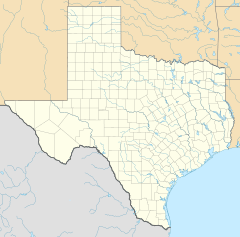Chunky, Texas facts for kids
Quick facts for kids
Chunky
|
|
|---|---|
| Country | United States |
| State | Texas |
| County | Potter |
| Elevation | 3,222 ft (982 m) |
| Time zone | UTC-5 (Central (CST)) |
| • Summer (DST) | UTC-4 (EDT) |
| GNIS feature ID | 1379548 |
Chunky is a small, quiet place in Potter County, Texas, United States. It is known as an unincorporated community. This means it doesn't have its own local government like a city or town does. Instead, it relies on the county for services.
Contents
Discovering Chunky: A Texas Community
Chunky is a unique spot in the vast state of Texas. It's a place where people live, but it's not officially a city or town. Think of it as a neighborhood that's part of a larger county area.
What is an Unincorporated Community?
An unincorporated community like Chunky doesn't have its own mayor or city council. It doesn't collect its own taxes for local services. Instead, the county government handles things like roads, law enforcement, and other public services for the people living there. This is different from a city, which has its own local rules and services.
Where is Chunky Located?
Chunky is found in Potter County, which is in the northern part of Texas. This area is often called the Texas Panhandle. The community is located at an elevation of about 3,222 feet (982 meters) above sea level. Its exact coordinates are 35 degrees 23 minutes 58 seconds North latitude and 101 degrees 50 minutes 27 seconds West longitude.
Life in a Small Texas Community
Life in an unincorporated community like Chunky can be very peaceful. Residents often enjoy a close-knit community feel. They rely on nearby towns or cities for things like schools, larger stores, and hospitals. For example, people in Chunky would likely use services available in Amarillo, the biggest city in Potter County.
The Natural Surroundings of Chunky
The area around Chunky is part of the Great Plains region. This means you'll find flat or gently rolling land, often used for farming or ranching. The weather can vary a lot, with hot summers and sometimes cold winters. The natural landscape is typical of the Texas Panhandle, with wide-open spaces and big skies.


